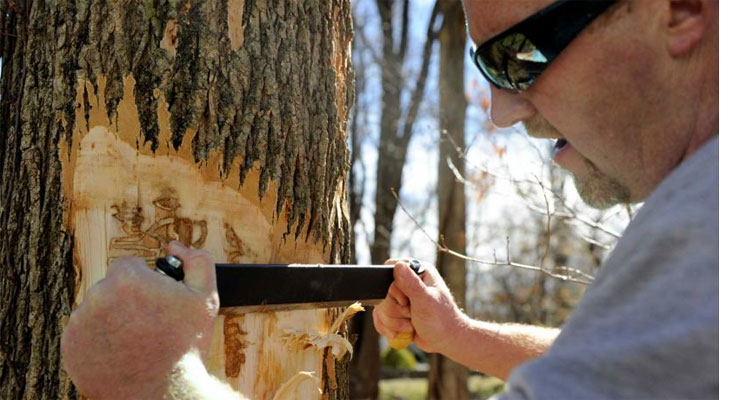Tree-killing pest found in Danbury
This article first appeared in the Danbury NewsTimes.
DANBURY — Four years after it was discovered in Connecticut, an invasive insect that is killing ash trees across the country has been found in Danbury.
A contractor working on Maplewood Drive this week found an ash tree infected with the emerald ash borer, a small, green non-native species of beetle so destructive that it is expected to all but wipe out ash trees in the Northeast in as little as a decade.
City and state officials said Friday this is the first report of an ash borer infestation in the city, but they were not surprised to hear it.
“This is not a new infestation,” said Katherine Dugas, a research assistant with the Connecticut Agricultural Experiment Station, or CAES. “What we’re seeing is confirmation, rather than an expansion.”
The insect showed up in Connecticut in 2012, a decade after its first appearance in Michigan. It is thought to have migrated from Asia.
Because the ash borer has established itself in at least 26 states, officials say, eradication is no longer considered possible. Instead, authorities have focused on slowing or preventing the spread of the insect into new areas by, for example, banning the moving of firewood.
Still, experts say, nearly every ash tree in Connecticut, and probably the entire northeast and eastern Canada, is destined to die.
Matt Bartelme, the contractor who spotted the infested tree near the New York state border this week, said Danbury’s ash trees are probably “doomed.”
“Now that we know that is in our area, all the ash trees are at a high risk of dying unless they’re chemically treated,” he said.
Other towns already affected include Newtown, New Milford, Sherman, Southbury and Bridgewater.
“It’s been around us,” Bartelme said. “It was just a matter of time until it got here.”
Gale Ridge, a CAES assistant agricultural scientist, said any trees within a 15-mile radius could be considered in danger.
Female ash borers lay their eggs under the bark of ash trees. When the eggs hatch, the larvae feed on the inner layers of the tree bark, cutting off the tree’s circulatory system. Nutrients then can’t reach the top of the tree, Bartelme said, so the crown and the top branches eventually die.
Trees tend to die within two to three years after becoming infested, but some last as long as eight years.
Other signs of infestation include D-shaped holes on the bark, horizontal tracks on the inner surface of the bark and unusual numbers of holes drilled by woodpeckers, for which ash borers are a favorite food.
Bartelme, who owns Barts Tree Service, said one of the best treatments is an insecticide known by the brand name Tree-äge, which is injected into the tree.
Another way of monitoring the spread of the ash borer is by noting the presence of a stingless wasp known as the smokey winged beetle bandit, which preys on the borer, Ridge said.
“We have research going on that is very promising to bring the population down,” she said.
Chris Martin, head of the state Department of Energy and Environmental Protection’s forestry division, said the insect could be active for up to five years before anyone notices.
“It’s very probable that the population has just grown and only now people are starting to notice that their ash trees are dying,” Martin said.
Infected trees should not be used as firewood because any larva or eggs underneath the bark could survive in cut wood long enough to find living hosts.
noliveira@newstimes.com, 203-731-3411, @olivnelson
This article first appeared in the Danbury NewsTimes.





